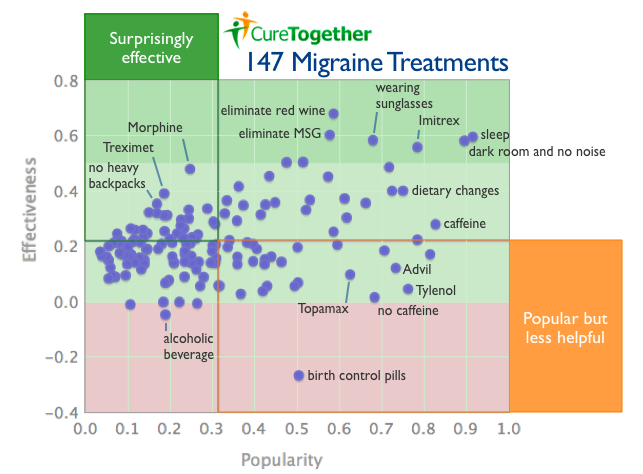Quantitative Crowdsourcing Disrupts Healthcare?
Wednesday, October 6th, 2010 In an earlier post, we explored PatientsLikeMe, a unique site for crowdsourcing patient data in great quantitative detail. The idea is that patients share tons of personal health data by tracking symptoms, lab results, interventions and the outcomes produced in quantitative form. This creates a river of data for helping each other and is invaluable for researchers, insurers, drug companies and medical device companies looking to develop better health solutions. An exciting and potential disruptive way to crowdsource health innovations.
In an earlier post, we explored PatientsLikeMe, a unique site for crowdsourcing patient data in great quantitative detail. The idea is that patients share tons of personal health data by tracking symptoms, lab results, interventions and the outcomes produced in quantitative form. This creates a river of data for helping each other and is invaluable for researchers, insurers, drug companies and medical device companies looking to develop better health solutions. An exciting and potential disruptive way to crowdsource health innovations.
But will an open source approach to clinical research catch on, especially will all the concerns about privacy? It looks like it is. Check out CureTogether. They have 13,000 members in 112 countries contributing 1.2 million data points on 600 conditions. All the data is supplied by patients. They are actively leveraging that it in 6 university-based studies. It is interesting to note that the most active area is anxiety with some 2000 members.
Patient sourcing (patients working on cures through a crowdsourcing model), especially when it is quantitative can change the time, cost and quality of clinical research by a factor of 10. As they point out on the website capturing quantitative is the key:
“CureTogether is about quantifying the collective patient experience. While most other patient support sites have focused on stories or information from experts, we focus on quantitative data across over 600 patient-contributed conditions. Individual data is kept private, but the anonymized aggregate data is shared openly to maximize discoveries that can be made.”
Obviously this involves considerable work for patients. But the return on effort is outstanding. Members get unique advice, daily encouragement and the opportunity to contribute to something of major importance. Powerful cognitive design.

